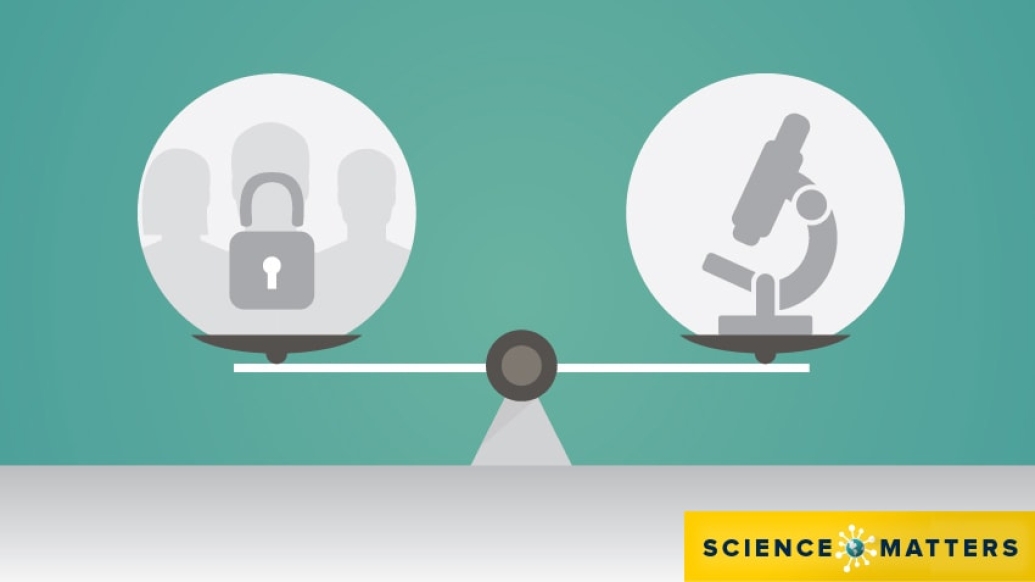Tissue and blood samples taken from patients can hold the keys to biomedical discovery. But the research community must consider patient privacy, a new perspective says.
1:00 PM
Author |

When Henrietta Lacks died six decades ago, she didn't know her cancer cells would live on and help scientists make thousands of medical discoveries affecting the lives of millions of people. They even led to a vaccine that can prevent the cervical cancer that killed her.
Controversially, as the best-selling book The Immortal Life of Henrietta Lacks documented, the cells were used without her knowledge or permission, her identity barely disguised.
This week, an HBO movie tells her story, with Oprah Winfrey starring as Lacks' daughter. As the movie airs, researchers are still trying to balance the great benefits of scientific discovery with the privacy rights of the people whose tissue or blood the research depends on.
A new paper by University of Michigan researchers looks at how that balance stands — and how it will change in January if new rules are put in place. The perspective is published in the Journal of Clinical Oncology.
U-M medical student Joshua D. Smith, senior author and head and neck surgeon and clinical ethicist Andrew Shuman, M.D., and co-author Kayte Spector-Bagdady, J.D., M.B.E., focused their work on what the new rules mean for cancer research, using the process at U-M for head and neck tumor patients as an example. But the summary applies to just about any kind of research that studies cells, genes, proteins and other tiny parts of the human machinery that play a role in disease.
The 'Common Rule' for research samples
Researchers today follow a much stricter standard than what was in place in Henrietta Lacks' day, requiring them to get a patient's informed consent before taking identifiable samples to use in research.
Once researchers have consent, they can use those samples, so long as they protect the patient's privacy.
Under these guidelines, the U-M head and neck cancer team has even harnessed some "immortal" cancer cells from its past patients to create cell lines that it has shared with researchers across the world.
The new Common Rule, which is slated to take effect in January, will better guide researchers in obtaining and using research specimens, says Smith.
It will also allow researchers to ask patients for permission to give "broad consent" — which allows an authorized researcher with institutional review board approval to use their samples with their information attached, as long as the researchers protect their privacy.
"If a patient consents to donate tissue today, there should be some information provided about what it will be used for, but ideally researchers should also share that we don't know what type of information we'll be able to generate from that same sample years from now," Smith says.
Unlike Lacks, today's patients can say no and decline to let identifiable samples taken from them be used for research. If they say yes, they're also generally advised that they can't expect any financial gain if, say, their sample is used to discover a new drug that a pharmaceutical company goes on to sell.
But the Common Rule revision stopped short of requiring that researchers go back to the patients who donated samples years ago and get consent.
Thankfully, Smith says, the final Common Rule also doesn't include a controversial provision that would have made researchers stop using samples 10 years after they were obtained.
If those provisions had been included, it could have stopped research using cell lines or archived samples dead in its tracks. But it does require research institutions and federal agencies to revisit their standards at least every four years in light of new technological breakthroughs and societal shifts.
For example, whole-genome sequencing can generate information that might not have a name or medical record associated with it, but it is still unique to one person. In the future, regulators may decide that technologies such as whole-genome sequencing should not be applied to specimens without consent because of the risk of being able to identify the participants.
Ensuring that standards for using patient samples are revisited often is a key provision of the new rule, says Smith — especially given how quickly scientific tools are improving.
A call for further updates
Despite progress, bioethics research on how patients understand the informed consent documents and information about how their samples might be used still needs to improve, says Spector-Bagdady.
Smith notes that as a physician-in-training, he sees time as a major issue. The speed of modern clinic visits means there might be pressure to rush through the informed consent process, rather than making sure the patient reads and understands it before signing.
"Many of the changes to the Common Rule won't be visible to patients, but rather will be behind the scenes, with the researchers and the institutions that oversee research," he says. "All of us need to make sure our practices keep up with the times and evaluate what we're doing to ensure privacy and confidentiality while not getting in the way of science."
But as Lacks' story again hits the public eye, Smith says, it's important to remember "how many scientific breakthroughs have come from her cell line. It was her gift to science, whether that was her choice or not."
He adds, "Without her, we would not be anywhere close to where we are in cancer treatment. And when we're approaching today's patients for consent, we need to say that we don't know exactly what will come from your samples, but that you have the potential to help patients down the road and that we will take your privacy seriously."

Explore a variety of healthcare news & stories by visiting the Health Lab home page for more articles.

Department of Communication at Michigan Medicine
Want top health & research news weekly? Sign up for Health Lab’s newsletters today!





